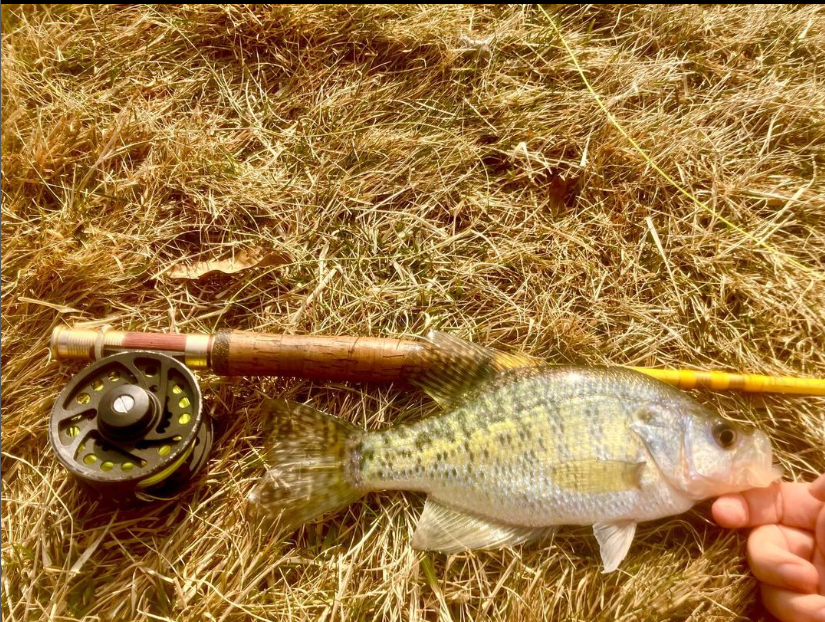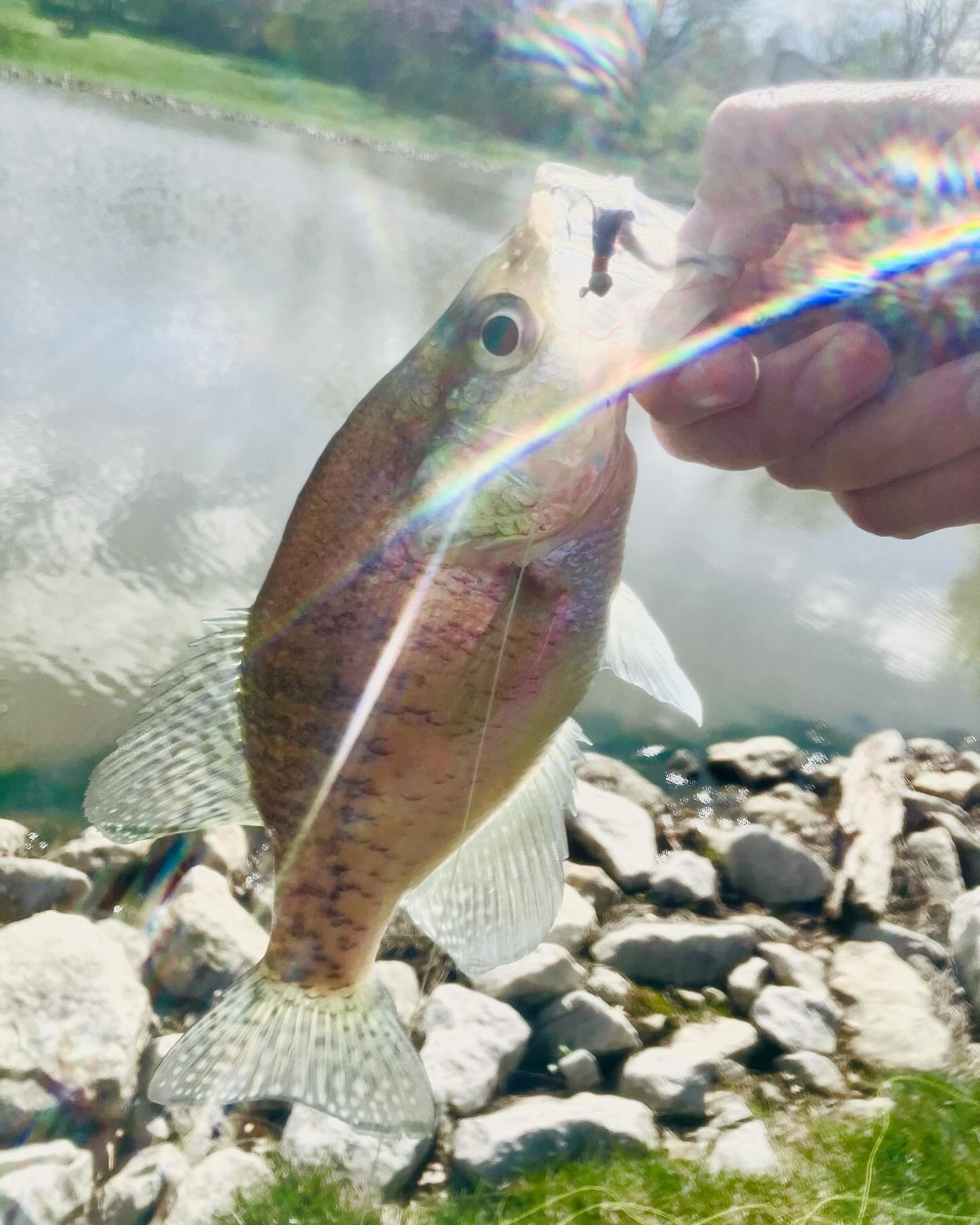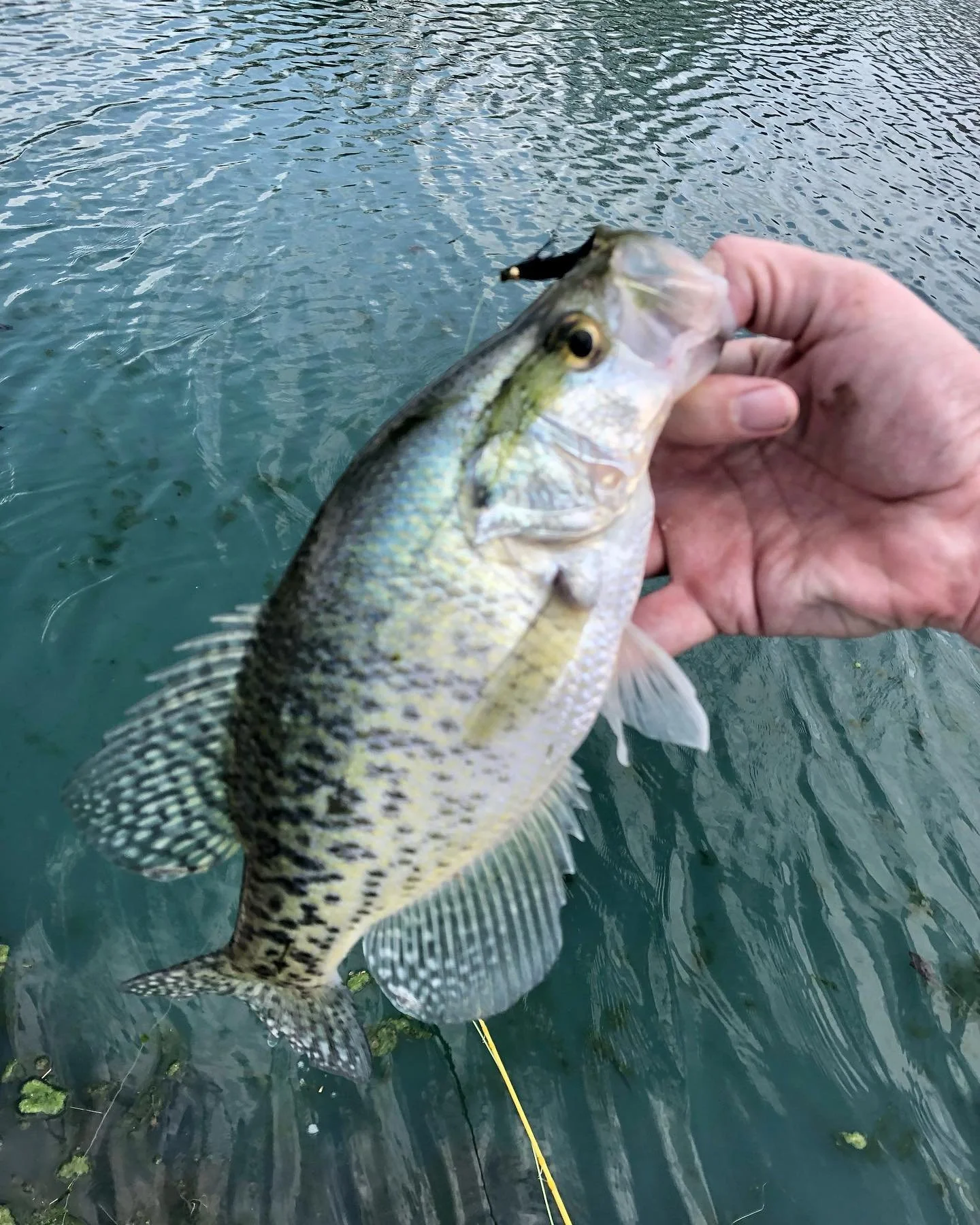Slabs on the Fly
As an angler who has caught plenty of slabs with ultralight spinning gear and even on long cane poles spider rigging from a boat, a fly rod is by far my favorite way to catch them. While Crappie are renowned for their tasty fillets, they are less so considered a strong fighting gamefish. They're often pursued with conventional gear but the challenge and satisfaction of catching crappie on a fly rod adds a whole new dimension to the experience. Not all fly fishing takes place high in the water column and not all crappie are located deep in submerged timber. Like most fishing pursuits on the fly, you can find much joy and surprise in exploring the overlooked. You can indeed catch these overlooked gems with a variety of flies and often as readily as with conventional gear.
Understanding Crappie Behavior
Before we delve into the tactics, it's crucial to understand the behavior of crappie. These fish are notorious for their affinity for structure. Whether it's submerged trees, brush piles, or rocky outcrops, crappie love to hang out in areas that provide cover and ambush points for their prey. Additionally, they're known to move in schools, so once you locate one, chances are there are more nearby.
The time of year is critical too. After the spawn, you may not see many crappie in your local body of water until the fall. For this reason, when you locate them, definitely note that location but don’t be surprised if they’ve moved off of it next time you pursue them.
Gear Selection
When targeting crappie on the fly rod, selecting the right gear is essential. Opt for a lightweight rod, typically in the 3 to 5 weight range, to provide delicate presentations and ensure you can feel the subtle strikes. Pair it with a matching weight-forward floating line to effectively cast small flies with precision.
Fly Selection
Crappie are opportunistic feeders and will readily take a variety of small offerings.
Start with basic patterns such as Clouser Minnows, Woolly Buggers, and small jigs in natural colors like white, gray, chartreuse, and black. Big, chunky white woolly buggers with flash included are particularly deadly. Additionally, I’ve caught them on smaller nymphs and wet flies while targeting other sunfish. These mimic the aquatic insects and small baitfish crappie feed on as well as other panfish.
Techniques for Success:
This crappie smashed a black wooly bugger while bass fishing. Sometimes the subtle crappie can surprise you.
Spotting Structures: Begin by scouting the water for likely crappie habitat. Look for submerged structures like fallen trees, brush piles, or docks. Crappie often suspend near these structures, especially during the warmer months. Shadows are the friend of many predatory fish and crappie are no different.
Precision Casting: Once you've identified a promising spot, get in close to the structure. A suspended approach using a strike indicator is often deadly for suspended fish. Where there is one, there’s almost always plenty more. Crappie are ambush predators, so presenting your fly within their striking distance is key.
Slow Retrieval: After making your cast, let the fly sink for a few seconds before starting your retrieve. My default is a quick tug, pause, tug, tug, on the fly line to mimic the movement of injured baitfish or drifting insects and entice strikes. Pay close attention to any subtle pauses or any hint of resistance in your line. You don’t want to set the hook hard into their papermouths. Crappie often take the fly on the drop and strikes are not as aggressive however some will surprise you!.
Depth Adjustment: Crappie may be holding at different depths depending on the time of day and water temperature. Experiment with different sinking rates or add tiny split-shot weights to your leader to adjust the depth of your presentation until you find where the fish are holding.
Patience and Persistence: Crappie can be finicky at times, so don't be discouraged if they seem elusive. Keep changing flies, adjusting your presentation, and exploring different areas until you find success.
Catching crappie on the fly rod requires a combination of patience, skill, and understanding of their behavior. By employing the right techniques and gear, you can unlock the thrill of hooking into these prized panfish on the fly. So, next time you're on the water, give crappie fishing a try with your fly rod, and prepare for an unforgettable angling experience! Tight lines and happy fishing!










